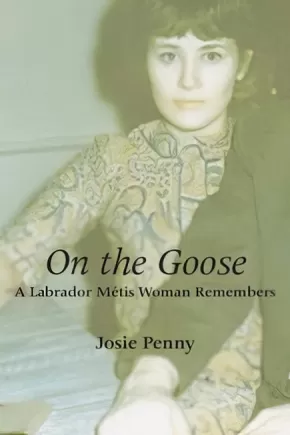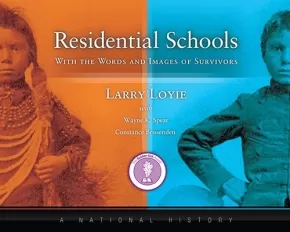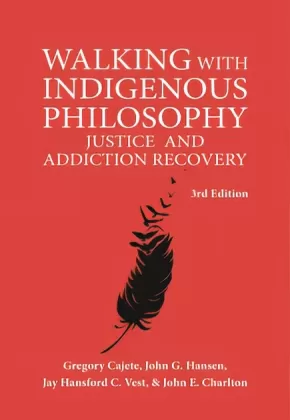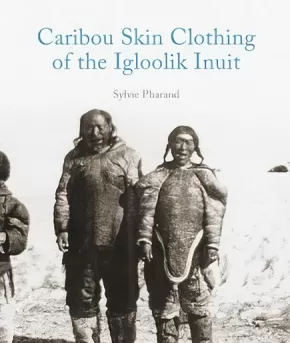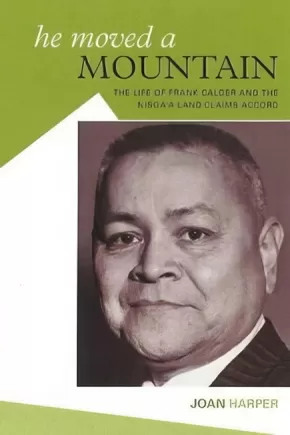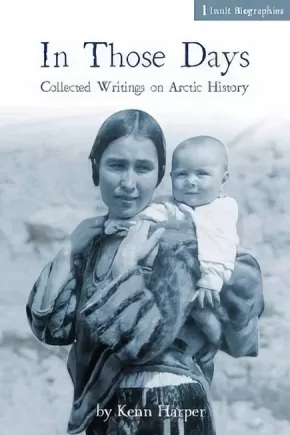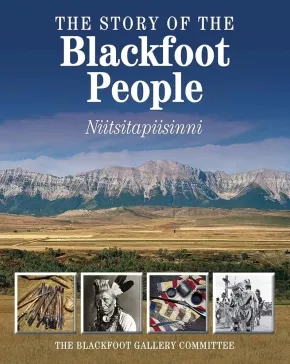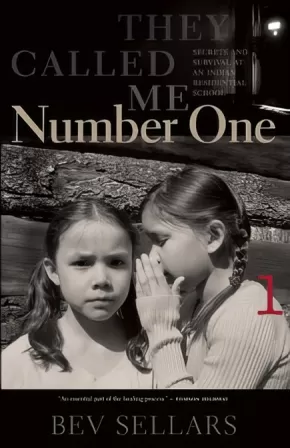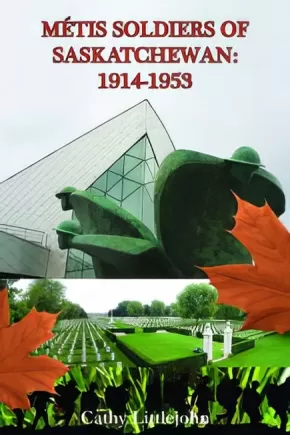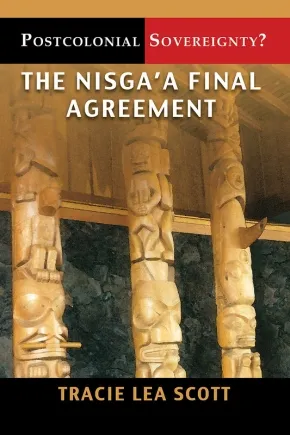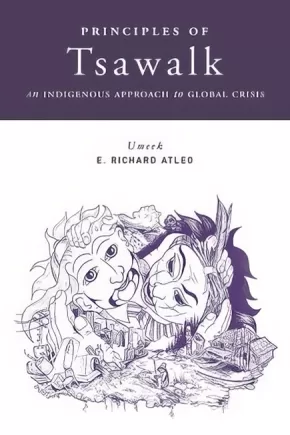Indigenous Peoples in Canada
Synopsis:
Josie Penny's life as part of a loving Métis family in an isolated corner of Labrador changed dramatically when she was taken away to a residential school. Abused by the students, Josie became increasingly angry and isolated from her family and community as she grew into her teens. At seventeen she left for Goose Bay to make her fortune and start her own life.
On the Goose is the story of how Josie came to terms with her feelings of helplessness and isolation as she began to understand why she could not feel or express love. Josie Penny's memoir is an inspiring true story of how love and hard work helped one woman triumph over adversity.
Synopsis:
Residential Schools, With the Words and Images of Survivors, A National History honours the survivors, the former students, who attended residential schools. Designed for the general reader this accessible, 112-page history offers a first-person perspective of the residential school system in Canada, as it shares the memories of more than 70 survivors from across Canada as well as 125 archival and contemporary images (65 black & white photographs, 51 colour, some never before published).
This essential volume written by award-winning author Larry Loyie (Cree), a survivor of St. Bernard Mission residential school in Grouard, AB, and co-authored by Constance Brissenden and Wayne K. Spear (Mohawk), reflects the ongoing commitment of this team to express the truths about residential school experiences and to honour the survivors whose voices are shared in this book.
Along with the voices, readers will be engaged by the evocative, archival photographs provided by the Shingwauk Residential Schools Centre with the assistance of curator Krista McCracken. The book begins with the moving introduction by Larry Loyie, and moves to seven chapters that explore the purpose of this school system; cultures and traditions; leaving home; life at school the half-day system; the dark side of the schools; friendship and laughter coping with a new life; changing world–the healing begins; and an afterword. A detailed, full colour map showing residential schools, timeline with key dates, glossary, and a helpful index (including names of survivors and schools) make this vital resource a must-have for secondary, college, and universities, libraries, and the general reader.
Reviews
"A broad and comprehensive review of the history of First Nations, Métis, and Inuit peoples in Canada told from the perspective of First Peoples in a very accessible way. Any educator, regardless of personal background or heritage, would find this timely resource very useful in any classroom." — Gary Fenn and Domenic Bellissimo, executive assistants, Ontario Secondary School Teachers’ Federation
"Written with a gentle hand, this book describes a history that few Canadians understand or even know about. From the first page, those in search of the truth are engaged in a journey of learning, as they come to understand the true battle of Aboriginal peoples to preserve their cultures and pride. This story is a true account of resiliency and human spirit." — Tracy Zweifel, executive director, Sagitawa Friendship Society, Alberta
Awards
- 2016 Winner of Golden Oak award in Ontario's Forest of Reading program
Educator Information
This must-have resource includes a detailed, full-colour map showing residential schools, a timeline with key dates, and a glossary.
Recommended for grades 7-12, but would still be useful for adults and college/university courses studying residential schools and Indigenous history.
This book has been evaluated and approved by ERAC (Educational Resource Acquisition Consortium, British Columbia).
Additional Information
112 pages | 10.43" x 8.26"
Synopsis:
Dr. Gregory Cajete, Dr. John G. Hansen, Dr. Jay Hansford C. Vest, and Dr. John E. Charlton have expanded the breadth, depth and scope of Walking With Indigenous Philosophy: Justice and Addiction Recovery (3rd ed.) making it a multidisciplinary, international and cross-cultural examination of a restorative justice based approach, that at its heart draws upon the wisdom inherent within Indigenous cultures, in order to question hierarchical and heavily one-sided disease based understanding to addiction recovery.
This third edition continues to advocate a model of restorative justice, saturated throughout by an Indigenous philosophy of holism and healing through inclusion and education, when working with those upon the margins, in order to appreciate and honour the whole person.
Justice is understood as a concept that must be based upon, and within, the recognition of the other. It is from within this recognition of the other that accountability, as a healing endeavour, must find its grounding. The voices of Cree elders indigenous to northern Manitoba, Indigenous Justice Workers, two American Indians (Cajete and Vest), one First Nation (Hansen), one addiction counselling professional (Charlton) and both Indigenous and non-Indigenous people in recovery are heard.
Reviews
"Walking With Indigenous Philosophy: Justice and Addiction Recovery (3rd ed) is an accurate and introspective look at Indigenous peoples and addictions. This exemplary work recognizes storytelling, restorying, and the inherent value within healing through spiritual and cultural praxis that privileges Indigenous ways of knowing. The book challenges the existing paradigm and takes you through an alternative method of being. Great for a textbook and reference for Addictions workers." - Verna Billy Minnabarriet
"For those who teach Native Cultures or want to be better informed, this book is a valuable resource. Its Indigenous perspectives on addiction recovery would be hard to find elsewhere." - Wanda Teays, PhD
Additional Information
238 pages | 6.00" x 9.00" | 3rd Edition | Paperback
Synopsis:
Caribou Skin Clothing of the Iglulik Inuit outlines the various steps involved in the creation of traditional Inuit caribou skin clothing, namely the hunt, preparation, and sewing.
In addition to diagrams and practical instructions, this book is filled with historical information and insights from Elders of the Iglulik region.
Meticulously researched by former Arctic resident and anthropologist Sylvie Pharand, this book can be used as a practical guide to creating caribou skin clothing, as well as a general-interest text for those interested in traditional skin clothing.
Synopsis:
Drawing upon a variety of academic sources as well as personal and professional experiences, Dr. Michell, a member of the Barren Lands First Nation, offers a book designed to assist educators in coming to understand the larger frameworks of Cree ontology (ways of seeing the world and one’s place in it), epistemology (ways of understanding knowledge), and methodologies (ways of teaching).
While Dr. Michell’s book is a specific example of Cree culture, from northern Saskatchewan, the message is most certainly transferable beyond the Barren Lands First Nation example, and as such, offers readers entry into thinking about how to make bridges between diverse ways of knowing that is applicable cross-culturally.
Reviews
"The book Cree Ways of Knowing and School Science provides a good personal description of Cree culture and how it can improve science teaching in the classroom for First Nations students. Drawing from his experience in Northern Saskatchewan, Dr. Michell illustrates the importance of hands-on experience for students and the need to relate what they are learning in the classroom to their culture. Most importantly, Dr. Michell promotes taking the students to the knowledge holders (the Elders) and to the natural teaching lab (the land), thus incorporating traditional knowledge in the teaching of science. Elders are an essential component in this endeavour. This book will be of interest to current and prospective teachers as well as to anyone interested in cross-cultural experiences and learning. This book provides a timely contribution to the question of how to improve educational outcomes for First Nations students, a critical issue for federal, provincial and First Nations governments." - Fidji Gendron, PhD
Educator Information
Table of Contents
Preface
1. Introduction
2. Nîhîthawâk Ithînîwak
3. Nîhîthawâk Ithînîwak and School Science: A Storied Reflection
4. Nîhîthâwatîsîwîn
5. The Concept of Indigenous Science
6. The Concept of Western Science
7. Assumptions in Western and Cree Ways of Knowing
8. Promising Practices: School Science in Cree Contexts
References
About the Author
Additional Information
88 pages | 7.00" x 10.50" | Paperback
Synopsis:
Dr. Frank Arthur Calder of BC's Nisga'a First Nation was the first aboriginal person to be elected to any Canadian governing body. For twenty-six years he served as an MLA in the legislature of British Columbia. He was the driving force behind Canada's decision to grant recognition of aboriginal land title to First Nations people throughout the country. He accomplished this goal by guiding the controversial request through a series of court cases, finally to the Supreme Court of Canada, achieving success when Parliament, in an all-party resolution, passed a measure recognizing indigenous title. Because of this historic decision, Canada serves as a resource for other aboriginal populations in countries where similar accommodations for aboriginal people have not yet been made. Calder received many honours in his lifetime, including the Order of Canada. The one he most cherished, however, was one rarely bestowed by the Nisga'a Nation: "Chief of Chiefs." While growing up, Frank went to grade 10 in residential school, completed high school and then graduated from the University of BC (in the Anglican Theological College). It took him two years longer than usual to complete university, as he had to return home during the fishing season to earn the money for his tuition.
Synopsis:
Arctic historian Kenn Harper gathers the best of his columns about Inuit history, which appear weekly in Nunatsiaq News, in this exciting new series of books.
Each installment of In Those Days: Collected Columns on Arctic History will cover a particularly fascinating aspect of traditional Inuit life. In volume one, “Inuit Biographies,” Harper shares the unique challenges and life histories of several Inuit living in pre-contact times.
The result of extensive interviews, research, and travel across the Arctic, these amazing short life histories provide readers with a detailed understanding of their specific time and place.
Series Information
This book is part of the In Those Days series, a historical series that collects writings on Arctic history.
Additional Information
200 pages | 6.00" x 9.00"
Synopsis:
For the first time in history, the Blackfoot people share their culture, beliefs and traditions with the rest of the world.
In an innovative partnership with the Glenbow Museum in Calgary, Alberta, a team of elders and spiritual leaders from the Blackfoot community agreed to share their history, traditions and artifacts in an effort to document their lives. The Story of the Blackfoot People: Nitsitapiisinni is the first piece of permanent documentation written by the leaders of the Blackfoot community about their lives both past and present.
This book chronicles all the important aspects of Blackfoot life and history. The book begins by exploring the fundamental belief systems of the Blackfoot including their traditional stories, sacred places, dances and ceremonies. Strong relationships are recognized by the Blackfoot as one of the most important keys to survival and the roles of men, women, children and elders, and their sacred connection to nature and their environment, are examined in detail. Less harmonious relationships are also candidly explored including relations between the Blackfoot people and the governments of the United States and Canada. In its moving conclusion, the Blackfoot community discusses the importance of uniting ancient traditions with modern challenges in order for their legacy to survive.
Revealing the enduring strength and fortitude of spirit of the Blackfoot people, this book will have meaning for both native and non-native readers alike.
Authenticity Note: This work is labelled as containing Authentic Indigenous Text because of the contributions from elders and other Indigenous peoples.
Synopsis:
Like thousands of Aboriginal children in Canada, and elsewhere in the colonized world, Xatsu'll chief Bev Sellars spent part of her childhood as a student in a church-run residential school.
These institutions endeavored to "civilize" Native children through Christian teachings; forced separation from family, language, and culture; and strict discipline. Perhaps the most symbolically potent strategy used to alienate residential school children was addressing them by assigned numbers only-not by the names with which they knew and understood themselves.
In this frank and poignant memoir of her years at St. Joseph's Mission, Sellars breaks her silence about the residential school's lasting effects on her and her family-from substance abuse to suicide attempts-and eloquently articulates her own path to healing. 'Number One' comes at a time of recognition-by governments and society at large-that only through knowing the truth about these past injustices can we begin to redress them.
Awards
- 2014 Burt Award Third Place Winner
Educator Information
Grades 10-12 BC English First Peoples resource for the unit Place-Conscious Learning - Exploring Text through Local Landscape.
Additional Information
256 pages | 5.67" x 8.20"
Synopsis:
Xwelqwiya is the life story of Rena Point Bolton, a St:lo (or, as they are now called, Xwlmexw) matriarch, artist, and craftswoman. Proceeding by way of conversational vignettes, the beginning chapters recount Point Bolton? early years on the banks of the Fraser River during the Depression. While at the time the St:lo, or Xwlmexw, as they call themselves today, kept secret their ways of life to avoid persecution by the Canadian government, Point Bolton's mother and grandmother schooled her in the skills needed for living from what the land provides, as well as in the craftwork and songs of her people, passing on a duty to keep these practices alive. Point Bolton was taken to a residential school for the next several years and would go on to marry and raise ten children, but her childhood training ultimately set the stage for her roles as a teacher and activist. Recognizing the urgent need to forge a sense of cultural continuity among the younger members of her community, Point Bolton visited many communities and worked with federal, provincial, and First Nations politicians to help break the intercultural silence by reviving knowledge of and interest in Aboriginal art. She did so with the deft and heartfelt use of both her voice and her hands.
Over the course of many years, Daly collaborated with Point Bolton to pen her story. At once a memoir, an oral history, and an "insider" ethnography directed and presented by the subject herself, the result attests both to Daly's relationship with the family and to Point Bolton's desire to inspire others to use traditional knowledge and experience to build their own distinctive, successful, and creative lives.
Additional Information
320 pages | 6.00" x 9.00"
Synopsis:
First Nations, Inuit, and Métis music in Canada is dynamic and diverse, reflecting continuities with earlier traditions and innovative approaches to creating new musical sounds. Aboriginal Music in Contemporary Canada narrates a story of resistance and renewal, struggle and success, as indigenous musicians in Canada negotiate who they are and who they want to be. Comprised of essays, interviews, and personal reflections by Aboriginal and non-Aboriginal musicians and scholars alike, the collection highlights themes of innovation, teaching and transmission, and cultural interaction. Individual chapters discuss musical genres ranging from popular styles including country and pop to nation-specific and intertribal practices such as powwows, as well as hybrid performances that incorporate music with theatre and dance. As a whole, this collection demonstrates how music is a powerful tool for articulating the social challenges faced by Aboriginal communities and an effective way to affirm indigenous strength and pride. Juxtaposing scholarly study with artistic practice, Aboriginal Music in Contemporary Canada celebrates and critically engages Canada's vibrant Aboriginal music scene. Contributors include Véronique Audet (Université de Montreal), Columpa C. Bobb (Tsleil Waututh and Nlaka'pamux, Manitoba Theatre for Young People), Sadie Buck (Haudenosaunee), Annette Chrétien (Métis), Marie Clements (Métis/Dene), Walter Denny Jr. (Mi'kmaw), Gabriel Desrosiers (Ojibwa, University of Minnesota, Morris), Beverley Diamond (Memorial University), Jimmy Dick (Cree), Byron Dueck (Royal Northern College of Music), Klisala Harrison (University of Helsinki), Donna Lariviere (Algonquin), Charity Marsh (University of Regina), Sophie Merasty (Dene and Cree), Garry Oker (Dane-zaa), Marcia Ostashewski (Cape Breton University), Mary Piercey (Memorial University), Amber Ridington (Memorial University), Dylan Robinson (Stó:lo, University of Toronto), Christopher Scales (Michigan State University), Gilles Sioui (Wendat), Gordon E. Smith (Queen's University), Beverly Souliere (Algonquin), Janice Esther Tulk (Memorial University), Florent Vollant (Innu) and Russell Wallace (Lil'wat).
Additional Information
520 pages | 6.14" x 9.25"
Authenticity Note: While the editors of this book are not Indigenous, the majority of contributors are Indigenous; therefore, this book has received the Authentic Indigenous Text label.
Synopsis:
This anthology of Aboriginal writings from Manitoba takes readers back through the millennia and forward to the present day, painting a dynamic picture of a territory interconnected through words, ideas, and experiences. A rich collection of stories, poetry, nonfiction, and speeches, it features:
- Historical writings, from important figures.
- Vibrant literary writing by eminent Aboriginal writers.
- Nonfiction and political writing from contemporary Aboriginal leaders.
- Local storytellers and keepers of knowledge from far-reaching Manitoba communities.
- New, vibrant voices that express the modern Aboriginal experiences.
- Anishinaabe, Cree, Dene, Inuit, Métis, and Sioux writers from Manitoba.
Educator & Series Information
Created in the spirit of the Anishinaabe concept debwe (to speak the truth), The Debwe Series is a collection of exceptional Aboriginal writing from across Canada. Manitowapow, a one-of-a-kind anthology, is the first book in The Debwe Series. Manitowapow is the traditional name that became Manitoba, a word that describes the sounds of beauty and power that created the province.
Recommended for grades 11 and 12, university students, and adults.
Additional Information
416 pages | 6.00" x 9.00"
Synopsis:
Métis Soldiers of Saskatchewan greatly contributes to our knowledge of the role played by Saskatchewan’s Métis during Canada’s war efforts. This important commemorative book contains hundreds of photographs as well as a detailed list of more than 1,700 Métis soldiers from Saskatchewan who fought in two World Wars and the Korean war.
Synopsis:
The 1999 Nisga'a agreement covering part of NW British Columbia was truly the first postcolonial land claims settlement in Canada, the author argues. The book analyzes the impact the agreement has on federal/provincial/First Nations relations and in a concise manner examines the major terms of the agreement. She notes that the agreement marks a major departure from previous agreements with First Nations and outlines the opposition, including two court challenges, mounted against the agreement.
Synopsis:
Tsawalk, or “one,” expresses the Nuu-chah-nulth view that all living things – human, plant, and animal – form part of an integrated whole brought into harmony through constant negotiation and mutual respect. In this book, Umeek argues that contemporary environmental and political crises and the ongoing plight of indigenous peoples reflect a world out of balance, a world in which Western approaches for sustainable living are not working. Nuu-chah-nulth principles of recognition, consent, and continuity, by contrast, hold the promise of bringing greater harmony, where all life forms are treated with respect and accorded formal constitutional recognition.
Additional Information
220 pages | 6.00" x 9.00" | Paperback

